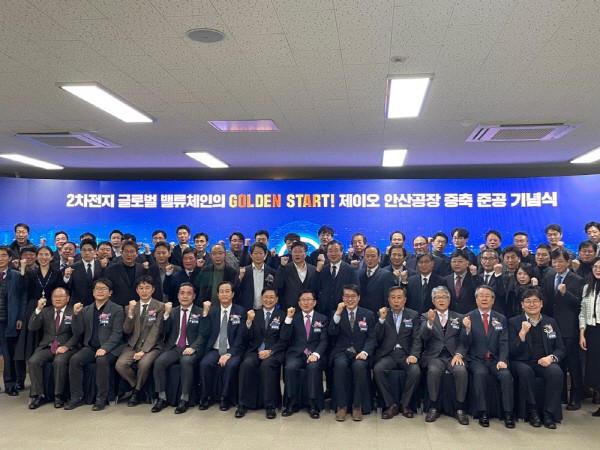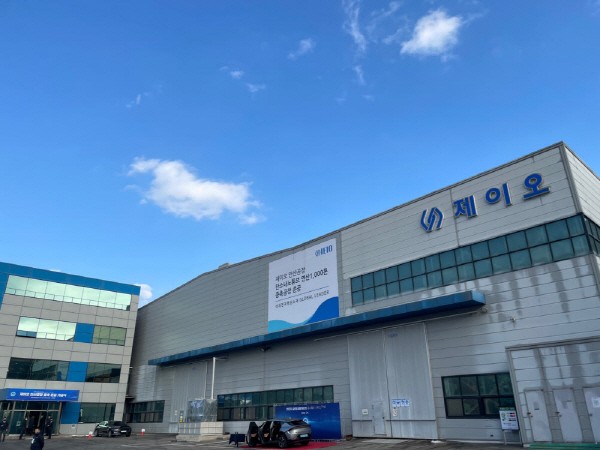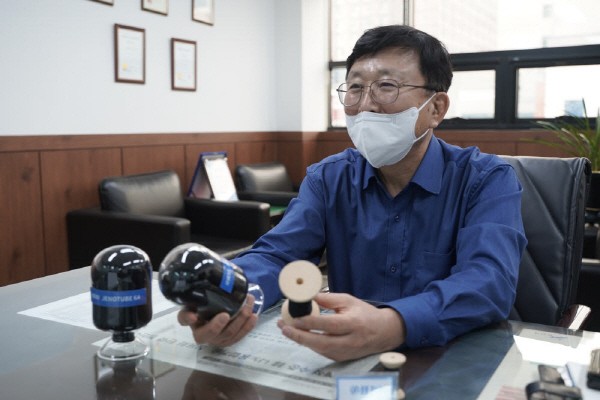JEIO established 1,000-ton carbon nanotube (CNT) production system. CNT is a next-generation conductive material that helps improve the performance of secondary batteries. It is evaluated that an important axis has been established in the domestic secondary battery supply chain. Only LG Chem and Kumho Petrochemical can mass-produce CNT in Korea.
On the 28th, JEIO held ceremony for completion on their new expansion of the Ansan factory, Gyeonggi Province. With the expansion, CNT production increased from 300 ton to 1,000 ton per year. In one year, the production scale more than tripled. 1,000 tons of conductive material is the amount that can make a battery with a capacity of 100 gigawatt hours. This is the amount that can be used in about 1.1 million vehicles based on amount that goes into Hyundai.
CNT is a new long tube-shaped material in which carbon atoms in a hexagonal lattice structure are connected with a diameter in nanometers. It is called a ‘New Dream Material’ because of its high strength and excellent electrical and thermal conductivity.

JEIO started CNT research in 2003. In 2006, they succeeded in mass-producing CNT, and in 2015, they mass-produced non-ferrous CNT for secondary batteries. They have SK on, Northvolt, CATL, and BYD as customers.
JEIO has expanded their mass production capacity in earnest to respond to the rapidly growing demand for CNT. LG Chem’s production capacity is currently 1,700 tons and Kumho Petrochemical’s is currently 120 tons. Considering the size of the company, expansion of JEIO is very aggressive.
It is interpreted that this is because orders are pouring in, and the current order backlog for JEIO CNT conductive materials is known to be 120 billion KRW. There are only three companies, including JEIO, that can produce CNT by completing registration under the Korean Act on the Registration and Evaluation, etc. of Chemical Substances.
The conductive material serves as a passage for lithium to come and go between the cathode and anode active materials of the secondary battery. If CNT, which has high conductivity and nano-size structure, is used as a conductive material, the input amount can be reduced by up to 80% compared to the existing carbon black material. Charging capacity and lifespan can be increased by injecting active materials as much as the reduced amount of conductive material. JEIO produces non-ferrous CNT with low fire risk.

JEIO is going to diversify their customers in Japan, North America, and Europe. They are developing sales activities targeting overseas customers. The company explained that they have also completed registration with the US Environmental Protection Agency (EPA) and the Registration, Evaluation and Authorization of CHemicals (REACH).
They also plan to expand their annual production capacity to 5,000 tons by 2025 in line with the growing demand for CNT. They plan to establish a new production base in the metropolitan area. To expand production capacity and invest in research and development (R&D), the company is seeking to be listed on the KOSDAQ in February of the next year.
In the new year, JEIO also set a goal for mass production of single-walled CNT for anode materials. Single-walled CNT, which can increase the stability of silicon anode materials, are currently produced worldwide only by OCSiAl from Russia. By localizing materials and securing mass production processes, they will expand their market share in secondary battery anode conductive materials. JEIO is also diversifying their CNT products, including textiles, sheets, and electric vehicle parts.

CEO Deukjoo Kang said, “We will leap forward as a global top-notch company with the technology accumulated over 20 years of research on CNT.”
By Staff Reporter Yoonsub Song (sys@etnews.com)
